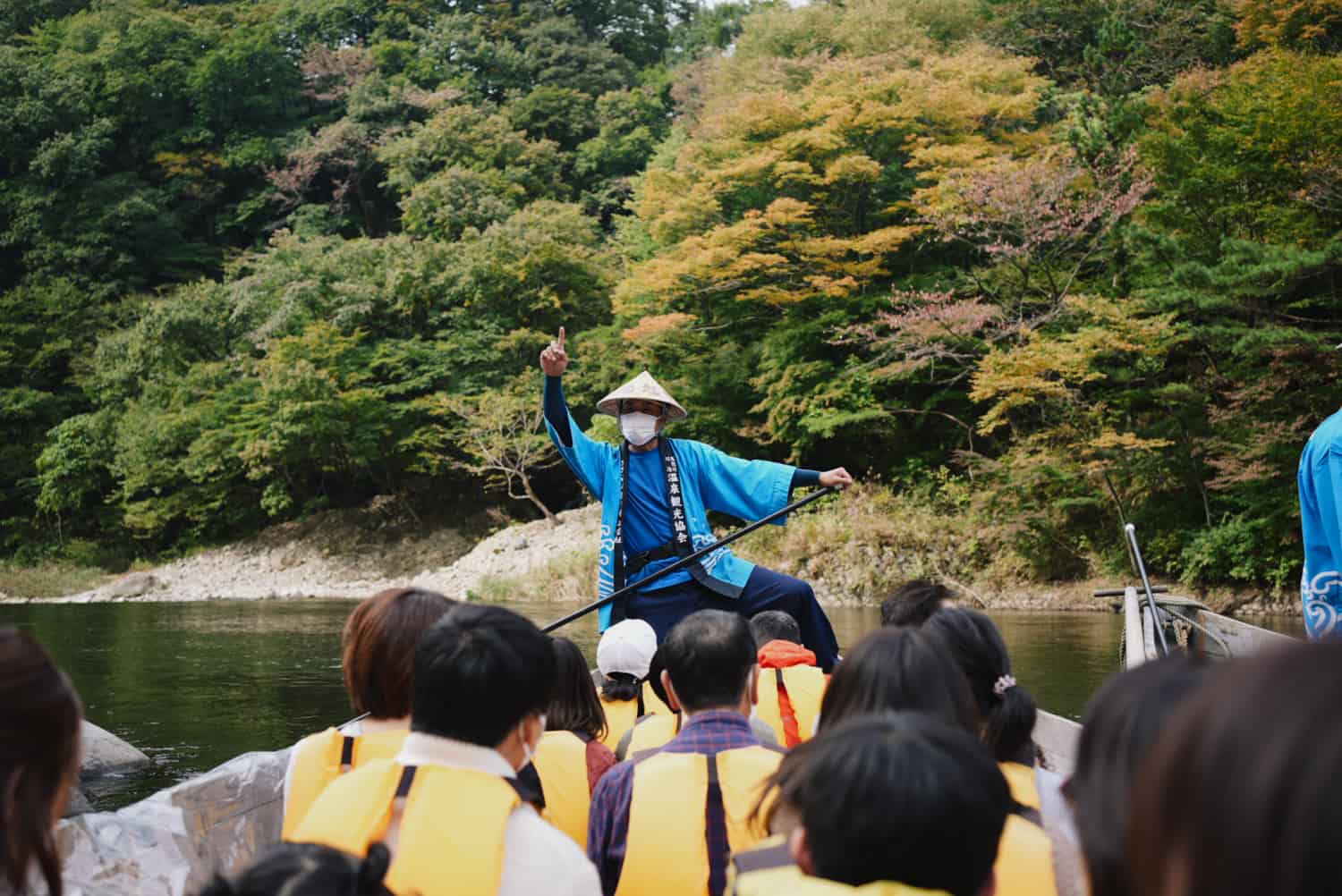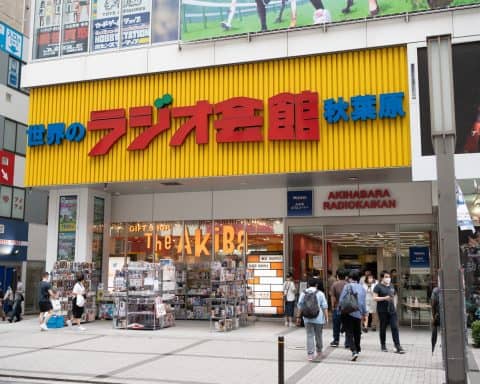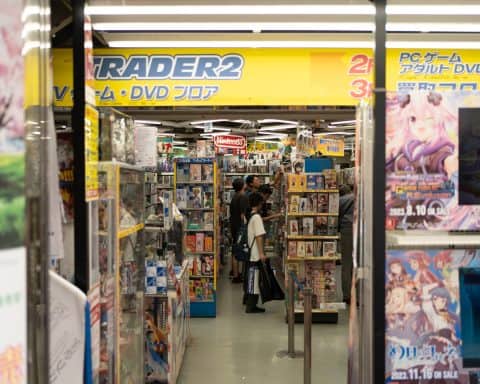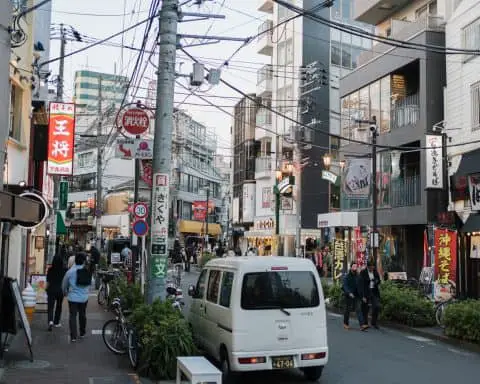Questions like ‘Is Nikko worth visiting?’ are some of the most common ones I end up answering every week by email. Some of them make it into an article, and some of them don’t for a variety of reasons, but Nikko, somewhere I’ve visited 3 times, absolutely deserves a chance to win you over!
With some of the most spectacular scenery, easy travel links to Tokyo, and loads of things to do, Nikko is worth visiting for just about anyone. No matter what season, what kind of interests, and the length of time you have in the area, this will likely be a great addition to your itinerary.
However, like most of these questions, your answer needs to be decided based on your own itinerary and what you want to get out of your trip to Japan. To help you make that decision, let’s talk a bit about the area, and figure out whether you personally should visit Nikko.
How to get to Nikko
You’re most likely to visit Nikko when you’re hanging around Tokyo. It takes just under 2 hours to get there by train and is a great little escape from the big city.
It’s also a lot simpler to get to than somewhere like Oshino Hakkai, though I’d thoroughly advise checking that out as well if you like cute little Japanese countryside towns.
As I briefly discussed in the things you need to know before boarding Shinkansen article, I’ve used both the Limited express train and the normal commuter/rapid trains to get there. Both are suitable options, but the train you take should depend on your budget, time constraints, and the level of comfort you’re after.
The Kegon limited express trains
Cost: Around ¥3,000 ($20)
Taking the Kegon limited express train from Asakusa station in Tokyo, all the way to Tōbu-nikkō station is by far the quickest and most straightforward way to get to Nikko. As far as I’m aware, there are a couple of limited express trains that operate on this line (from Asakusa station), and some are a little faster than others.
Revaty Kegon

This is the only train I have a photo of because I’ve only felt rich enough to take the limited express line once. It’s only about $10 more and highly worth the expense, so I’m not really sure why I didn’t do it sooner!
Spacia Kegon
The Spacia Kegon operates on the same line as the train above and it’ll just be a potluck which you get when you arrive. In case you’re wondering what it looks like, imagine a bullet train that never quite got to be a bullet train and you’ll have a rough idea. Kinda cute in my opinion.
Kinu
The Kinu train diverts a few minutes before the other trains do and travel up to Kinugawa-onsen. It’s still in Nikko, and is a really nice area to visit which we’ll talk about later on in the article.
No matter which train you chose, you’ll still usually only need to hop on one limited express train from central Tokyo to Nikko. In any case, it’s a very simple journey.
Depending on where you’re staying in Tokyo, google maps might like to offer you an alternative that’s just commuter or rapid trains. I’d advise against going that route because it’ll likely either include multiple transfers, there won’t be guaranteed seats, and/or it’ll be a lot more hassle for what may only save you a few yen.
Where to stay in Nikko
Nikko is a huge area, and as you’ll see later there’s not really a single place you should or shouldn’t stay in. My best suggestion to you would be to stay as close to one of the stations as possible, or at least within walking distance.
Staying close to a station will give you quick access to other areas in Nikko, a good amount of infrastructure, and more than enough connections with busses to get to the more remote areas. If, however, you’re planning on doing hiking or something more remote for a couple of days, it makes sense to book somewhere much closer to that activity.
As I’ve only stayed in a couple of places in Nikko, I’ll tell you about the one I stayed in most recently: Nikko Hoshinoyado
Nikko Hoshinoyado
This’ll just be a brief overview of the Ryokan including what I liked and didn’t like, and what I think you should look out for when you book your hotels. I’ll do another big post about the hotel later if it’s something you’re interested in.

Nikko Hoshinoyado is sat directly next to the Shinkyo bridge, a few minutes walk from Toshogu Shrine and the main high street. It’s also about a 10-minute walk from Tobu Nikko Station, with Nikko station a minute or two extra.
I’ll start out by saying that if you’re looking for a Ryokan (traditional Japanese inn) experience, then Nikko (or perhaps Hakone?)is a great place to come. If this is one of your main reasons for coming to the area, I’d suggest checking out places near Kinugawaonsen, which is another area of Nikko worth visiting if you have the time. It’s very easy and quick to from Tobu Nikko & Nikko station as well.
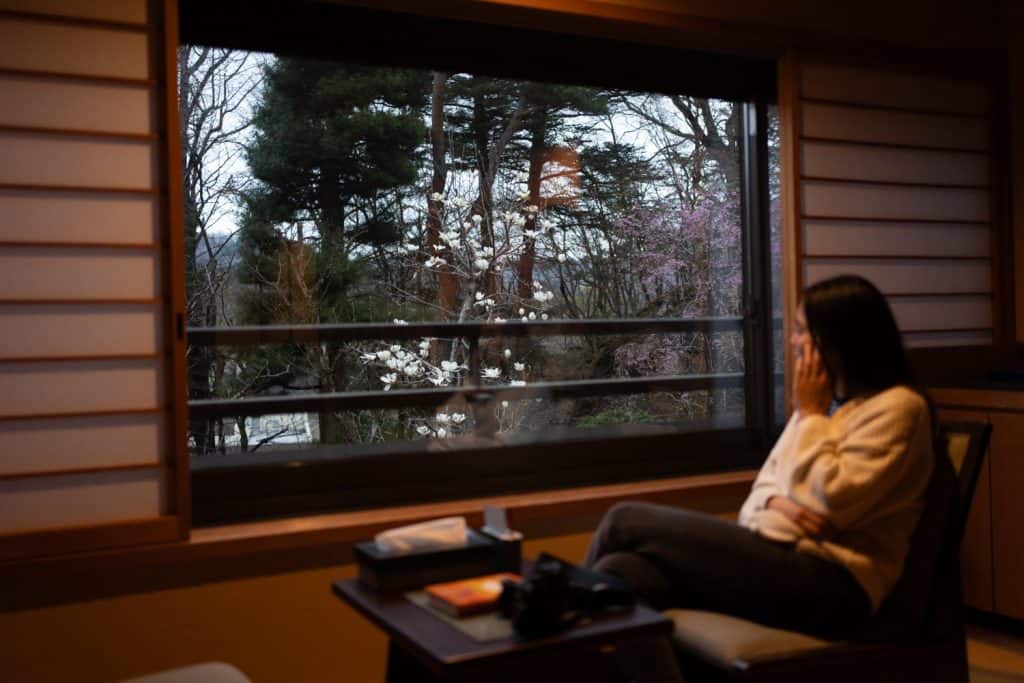
As you can see from the photo above, the room was in a Japanese style and looked out onto the beautiful gardens below. Definitely my favorite part of where we stayed.
Because we’re not made of money, we chose a room that did not have its own private bathroom. This may sound strange but a lot of these traditional Japanese hotels and rooms are similar to this all over the country.
This is because most of these ryokans have communal onsen where you’ll wash and relax, and so you only really need the room for sleeping. It did have a toilet in the room, but that was it.
It was otherwise just a big box with futons on the floor, simple but very zen-like. It’s a 3.5-star Ryokan, and for its location alone it’s a winner in my book.
If you’re looking for something a little different, I’ve included a widget underneath where you just need to type in “Nikko Japan” and you’ll be presented with a number of other options.
Things to do in Nikko
One thing I really appreciate about Nikko is the amount of things there are to do here. whether you fancy a walk around the neighborhood, a hike up a Japanese Japanese mountain, a visit to a historical site, or something for kids to enjoy, Nikko has an option.
Before I get into the things I’ve personally done here, let’s take a look at 10 of the most popular tours in the area. An absolutely great way to experience what Nikko has to offer.
Take a walk
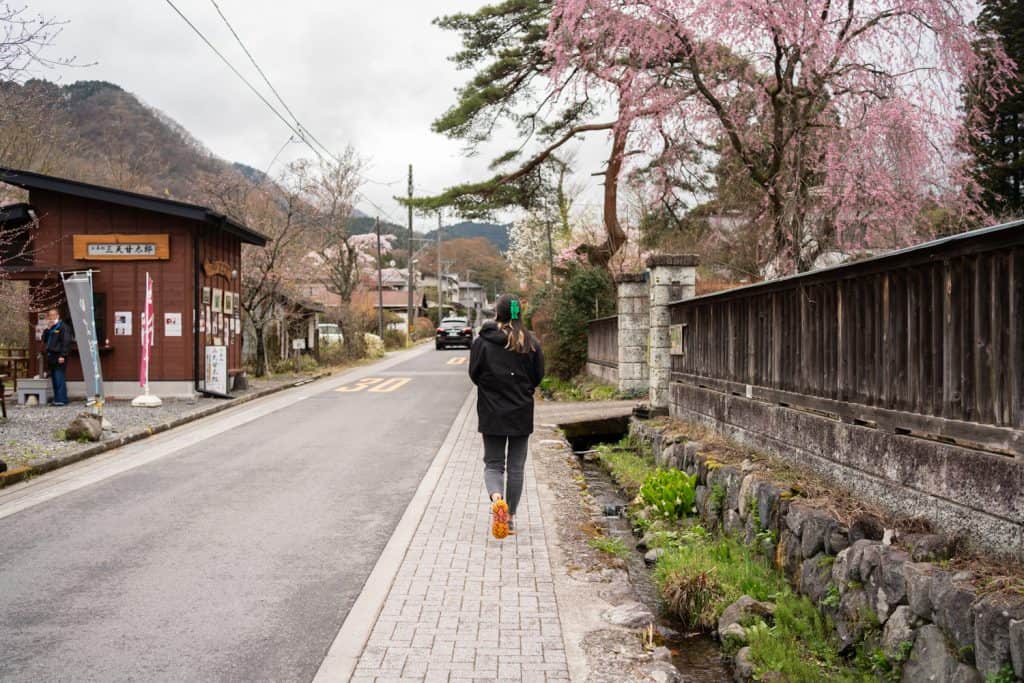
Honestly, I really feel like this one is missing out on way too many of these travel guides. And not just Nikko either, it’s a great idea to do this anywhere in Japan. If your itinerary is packed full of cities or ‘touristy’ places, going for a walk around some of the more suburban areas is such a fantastic idea.
Not only will this give you a better appreciation for the Japanese way of life, but it’s also a wonderful chance to take some time away from the hustle and bustle of the bigger cities.
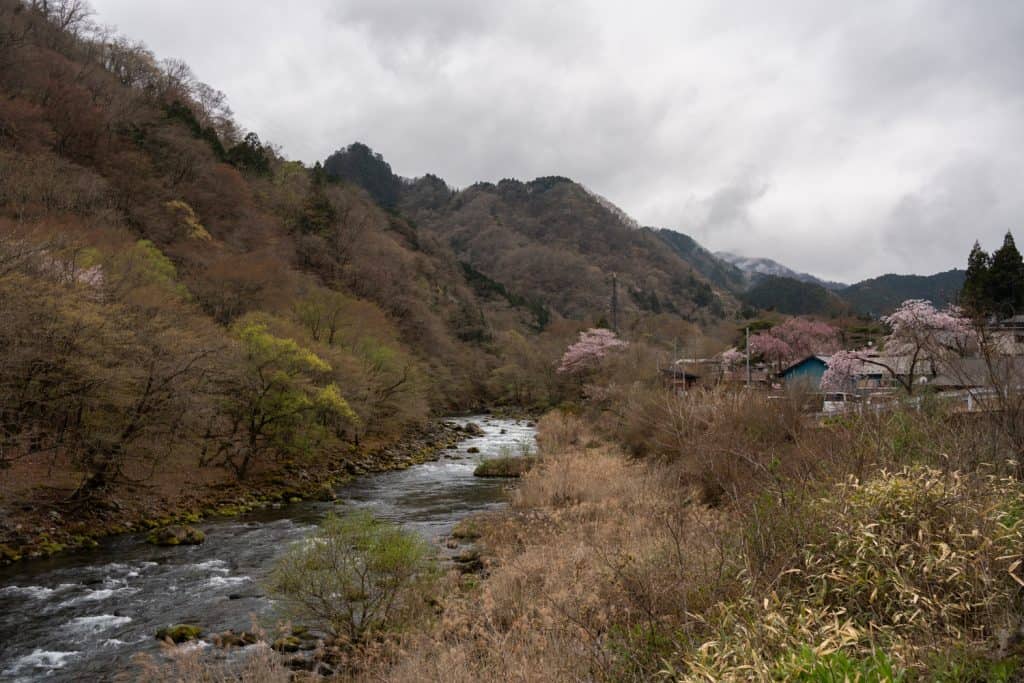
Just a couple of minutes away from our hotel was the Daiya-gawa River. Yes, you’re likely to see it if you’re walking anyway near the Shinkyo bridge (we’ll talk about that in a second) but I wanted to walk alongside it and just be at one with the start of Nikko’s massive natural area.
It was the perfect idea for a walk after breakfast, and even though it was a little bit overcast, the clouds only added to the atmosphere in my opinion. Photo dump incoming!
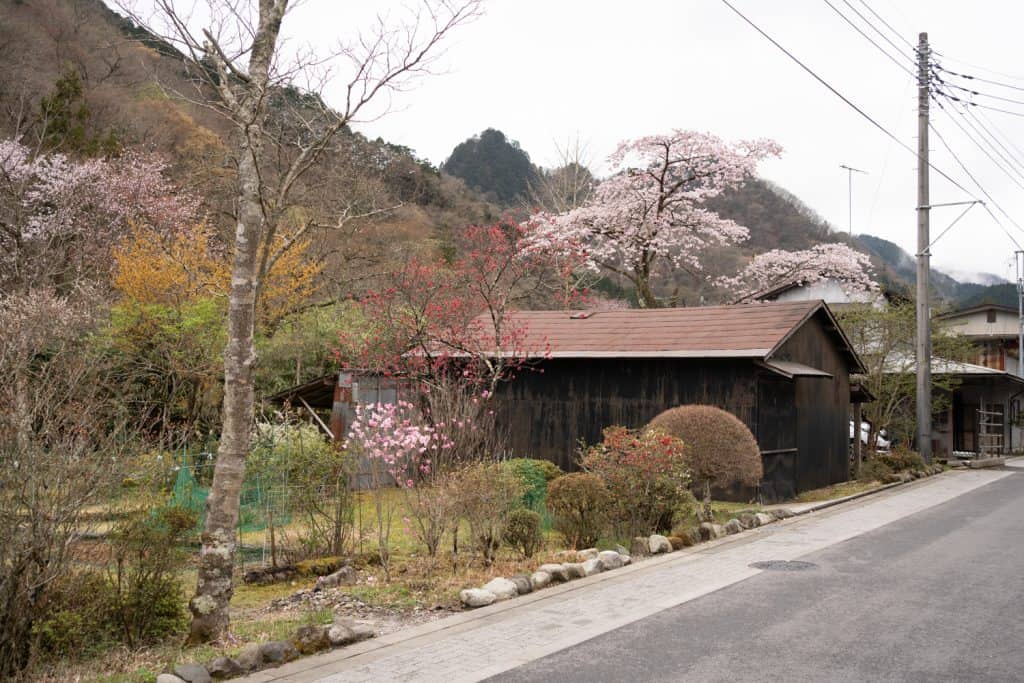


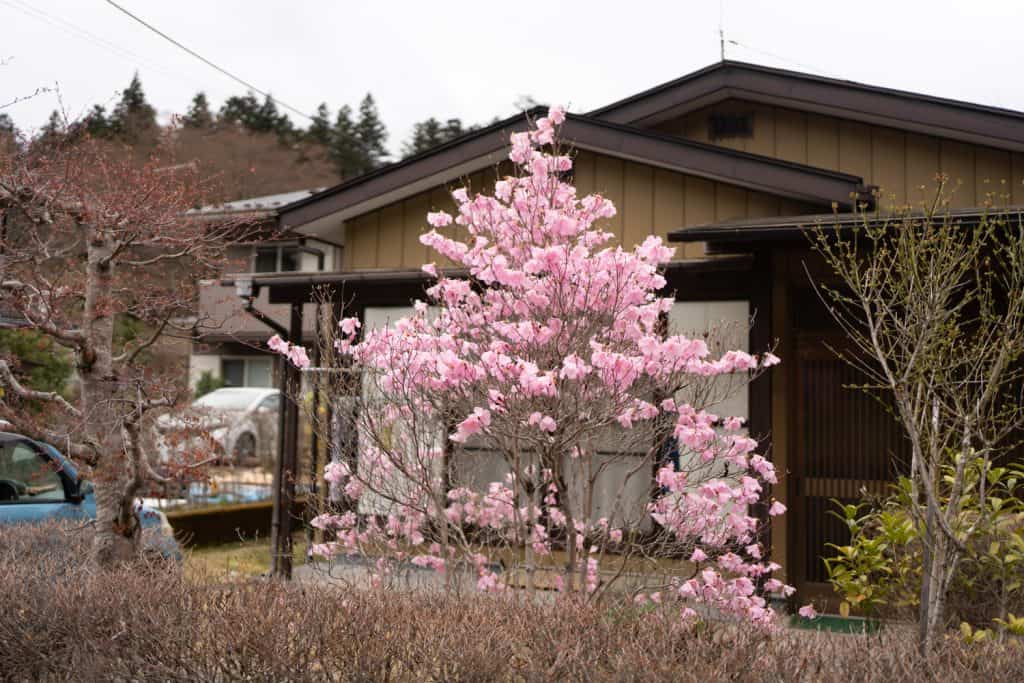
Top tip: If you’re unsure what to do on your holiday to Japan or your trip to Nikko, just go for a walk. You’ll be amazed at what you find!
Nikko Temples & Shrines
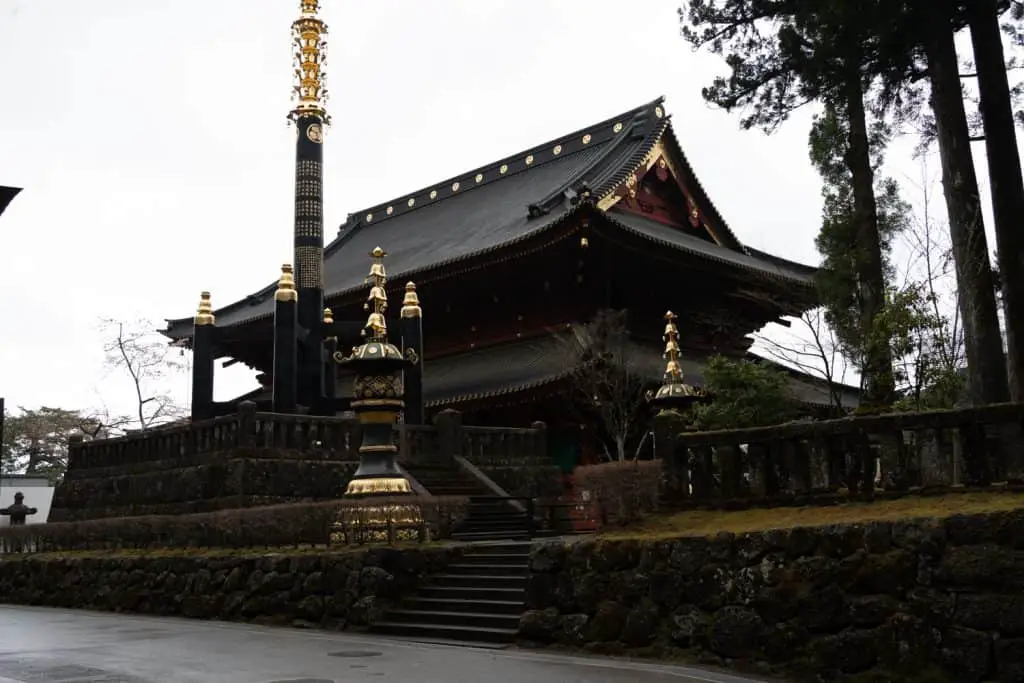
There are more than enough temples and shrines in and around Nikko, and it’s definitely one of the highlights of the area. I’ve been to this part of Nikko (just above the Shinkyo bridge) 3 times, and it always seems pretty magical to me. Perhaps the weather has played a part in that, but even during a very busy Momiji season, it didn’t disappoint.
Futarasan jinja
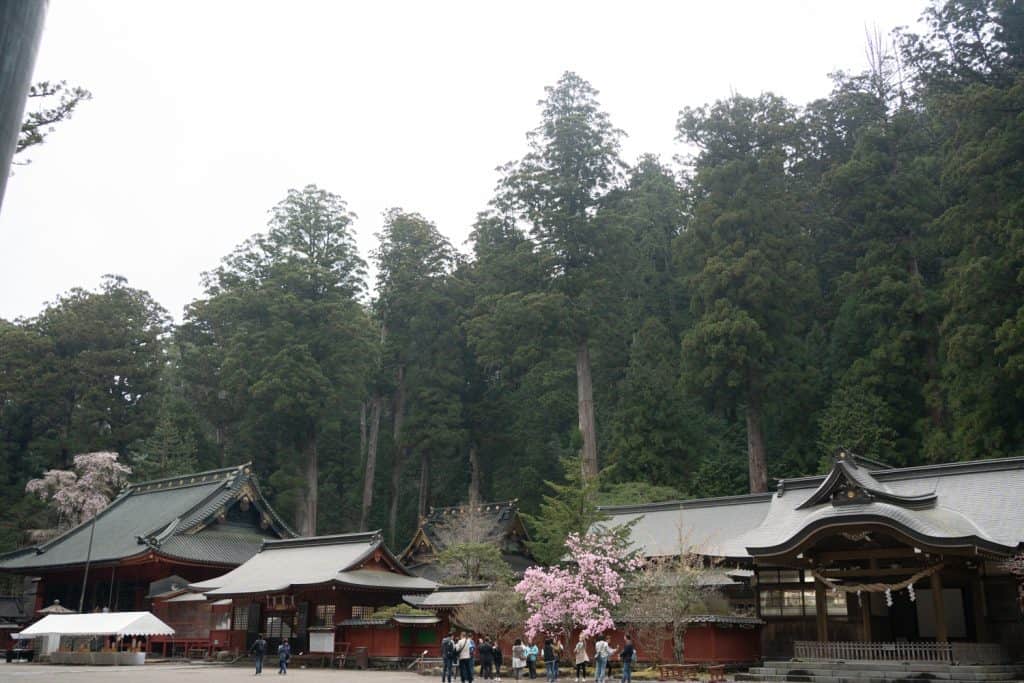
It may not be as grand as its neighbors, but I really like Futarasn Shrine. Perhaps it’s because every time I’ve ventured out here it’s been very cloudy and a little misty which adds, who knows.
It’s also a little further of a walk than the other places which I appreciate, though still nothing too big that would stop you from visiting all together. It tends to be a little quieter for this reason as well.
Founded in 782 by Shodo Shonin, Futarasan Shrine is dedicated to the three deities of Nikos sacred mountains: Mount Nyoho, Mount Taro, and Mount Nantai.
Toshogu Shrine

I visited the main Toshogu Shrine quite a few years ago, and for the cost of ¥1300 (just under 10 dollars) to get into the main section, I think it’s definitely worth visiting at least once. As far as I’m aware all of the shrines and temples in the grounds fall under the “Toshogu Shrine” umbrella, but you only have to pay to go inside (and around the grounds of) the main building.
You’ll find it right at the top of the hill (just follow the crowds), and while I do think it’s worth visiting if you’re not going to come back to the area, venturing around the walls is also a perfectly acceptable alternative.
Five Storied Pagoda
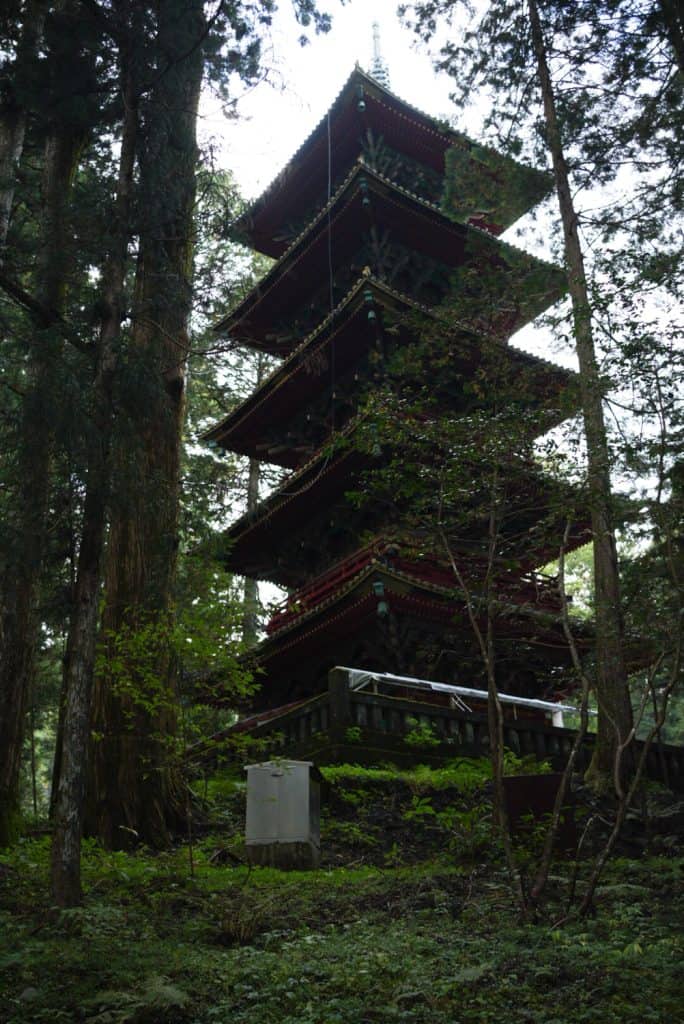
The Five-Storied Pagoda from Toshogu shrine is quite the sight, though the one we can see today was rebuilt in 1818 because the first one had burned down. It’s worth remembering that a lot of the temples and shrines in Japan were burned down which means you actually won’t be looking at the original.
If that’s not an issue to you then great, a lot of these buildings are still absolutely beautiful and well worth visiting. However, when I went to Osaka Castle it looked really nice from the outside but it’s honestly not worth going inside at all.
Shinkyo bridge
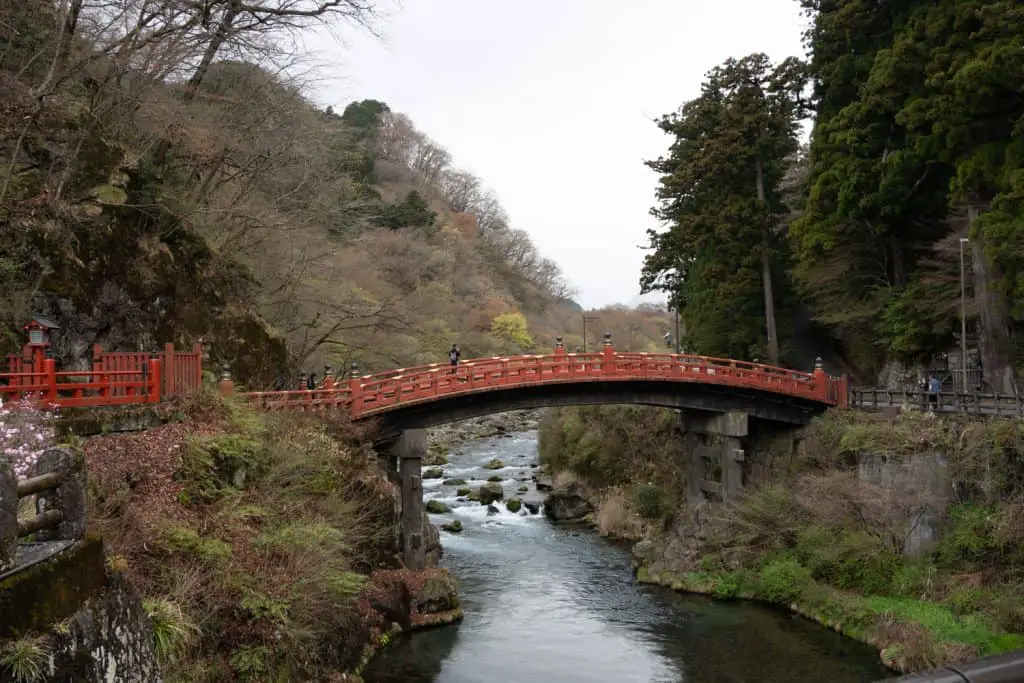
This 28-meter-long vermillion-colored bridge is one of the most well-photographed in the whole of Japan. Apparently, Shondo (the monk we talked about above) ask the mountain deities for help crossing the river, and two snakes appeared and turned themselves into a bridge.
Love a good story for places like this! It’s just at the top of the hill, within easy walking distance from the temple and Kanmangafuchi abyss.
Kanmangafuchi Abyss

This is a place I’d seen on google maps and knew I wanted to visit it. Luckily, it fit in perfectly with my early morning walk-in Nikko! The statues are said to protect children, women, and travelers on their journey.
It’s interesting to see how weathered many of these have become over the years they’ve been here. Some of the ones at the end are literally just stumps.
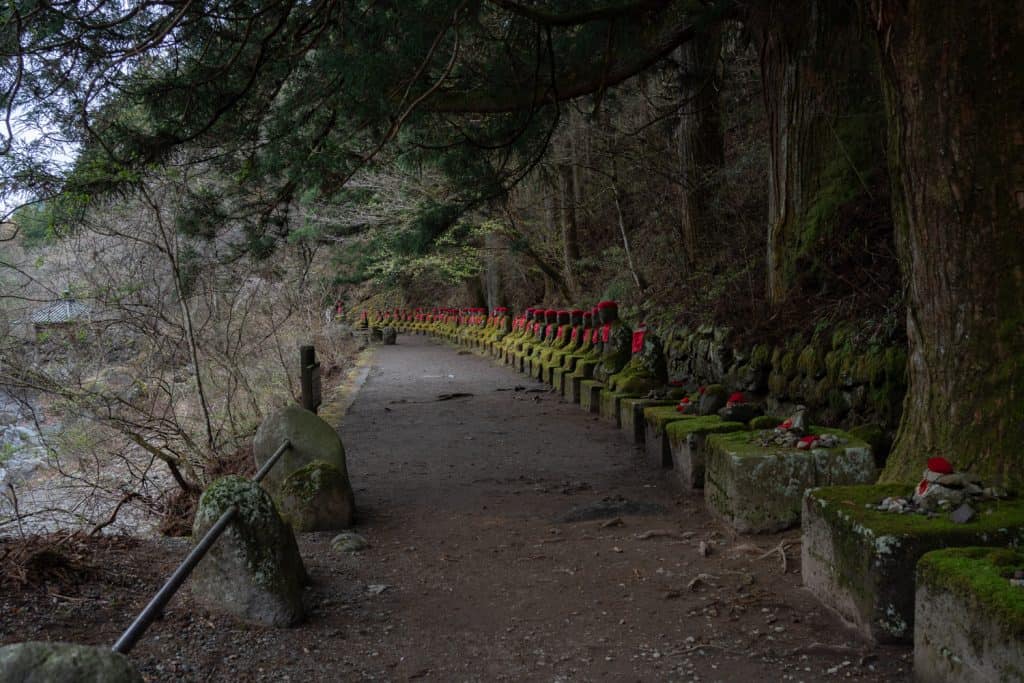
Visiting is absolutely worth it, and you can do a nice circular walk from the Shinkyo bridge that should take around an hour or so. Be warned, you’ll likely walk past FuFu Nikko which is a flipping incredible hotel that I’m jealous I can’t afford to stay at…
River cruise

All of the previous suggestions have been in a similar area, and this one is a little further out. When I say a little further out, it’s in the other you’ll likely want to visit if you’re coming to Nikko.
After getting off the train at Kinugawaonsen, we made our way to the river and took a seat on this pretty cool traditional Japanese riverboat. I can’t remember the exact name of it because our homestay host booked us in, but if you just type in ‘Kinugawaonsen River cruise’ to Google, something should come up.
It’s worth noting here that we sat cross-legged on the tatami for almost an hour before disembarking further down the river. I loved it, but I can absolutely see how this would likely be an uncomfortable experience for a lot of people

I also couldn’t understand any of the Japanese that the captain of the boat was saying which was a little annoying, but everyone else was laughing so I assume it was pretty funny.
In any case, sitting cross-legged on tatami and floating down the water between two incredibly scenic banks on an authentic Japanese riverboat is an experience that I won’t soon forget. 11/10 worth it.
Other places to visit include:
Tobu world square
One stop before Kinugawa onsen is Tobu World Square, one of the most highly rated things to do in Nikko. Classed as both a museum and a theme park, Tobu World Square has 1/25 scale reproductions of 102 world-famous buildings. This is definitely one for the more nerdy travelers like me!
This one’s on my bucket list of things to do, it’s giving me major Legoland flashbacks and I love it!
Edo Wonderland
Prefer something a little more historical? Edo Wonderland is a kind of ‘History theme park’ where you can feel like you’ve stepped back in time as you wander around an Edo-style town (1603-1868). Dress in a Kimono, don some ninja attire or simply take in your surroundings.
There are loads of live-action performances, a house of illusion, a trick maze, a haunted temple, a theatre, places to throw ninja stars, and much more.
I’ve been here a few years back and it was a really cool trip. Don’t expect it to be the best thing you do in Japan, but if you’re looking for a fun day out, this is a great choice.
Lake Chuzenji
At an altitude of 1,269 meters (Japan’s highest lake), a 25km hiking trail, and some of the most spectacular views of Kegon Falls, this is easily another bucket list destination in Nikko for me.
To get there you’ll need to get on a bus headed for Okunikko Yumoto Onsen from Nikko station or Tobu Nikko station, and get off at whichever point around the lake you want to.
Kegon Falls
There’s a reason those two trains we talked about at the start were named Kegon. That reason is Kegon Falls, Nikko’s most famous waterfall.
At almost 100 meters it’s an absolutely epic thing to be in the presence of, and being surrounded by Nikko National Park makes it even more special
Top Tip: If you find yourself visiting Kinugawa onsen station, make sure to take a quick dip in the foot onsen just outside the station. It’s completely free and it’s really relaxing if you’ve just taken the train!
Nikko spans a huge area, and there are so many more things to do than I’ve listed here (I’ll save that for another article), but it’s safe to say that no matter what your interests or budget are, there’ll be something here for you.
How long should you spend in Nikko?
If I had a dollar every time someone asked me ‘How long should I spend in…?” I probably wouldn’t need to keep blogging! It’s such a hard question to answer without knowing the rest of your itinerary your budget, and what interests you. However, It’s also a question I’ve asked a number of times myself.
First up, let’s talk about the possibility of a day trip.
Day Trip
Nikko is only a couple of hours away from Tokyo, so if you’re in the big city, it’s a very valid option for just a day trip. Granted you won’t be able to do everything, but you’ll be able to get a good feel for the area at least.
You might struggle to visit some of the attractions further out, but if you’re just hoping to see a few temples and have a relaxing afternoon in the mountains, it’s ideal.
2 Days in Nikko
2 days in Nikko is probably the ideal amount of time for most people. You’ll arrive in the morning of the first day, drop your luggage off at your hotel or train station locker (if you haven’t used Yamato Transport), and explore for the day. You could then head on your way at any point during the second day depending on what your plans are.
This is how I’ve done multiple areas of Nikko, and depending on your itinerary, I think this is an appropriate amount of time to dedicate to the area. Any longer and I think you’d end up missing out on somewhere in Japan if you’re on more of a general/first-time holiday.
When should you visit Nikko?
In a minute I want to talk about what season you should visit Nikko, but before that, I want to help you decide what day of the week to visit. If you’ve got a few days that you can change around, or perhaps you’ve had to cancel something, it’s a good idea to figure out the best and worst days of the week to visit an area.
While there’s no full proof ways of figuring out when a place is and isn’t going to be busy, we can do some basic research and make a few assumptions. The first (and most obvious) is to avoid the weekend rush.
So which weekday is best to visit Nikko?
Let’s look at two screenshots I took of googles ‘how busy is it now’ tool with two of the most popular attractions in Nikko.
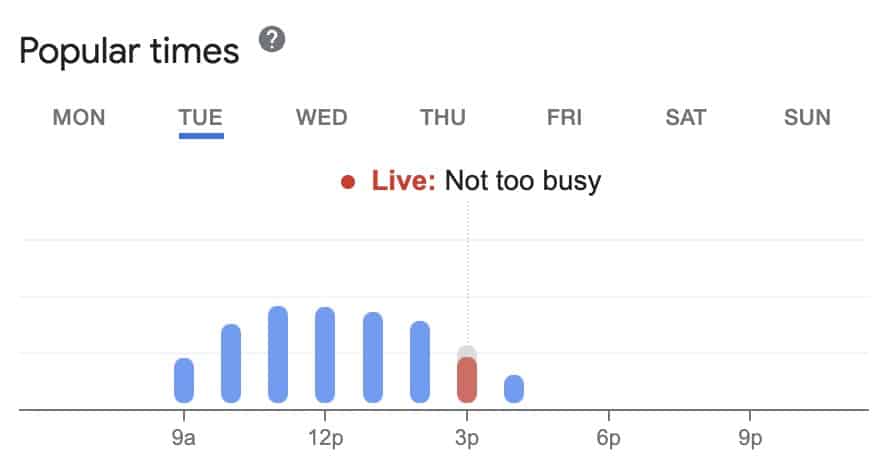
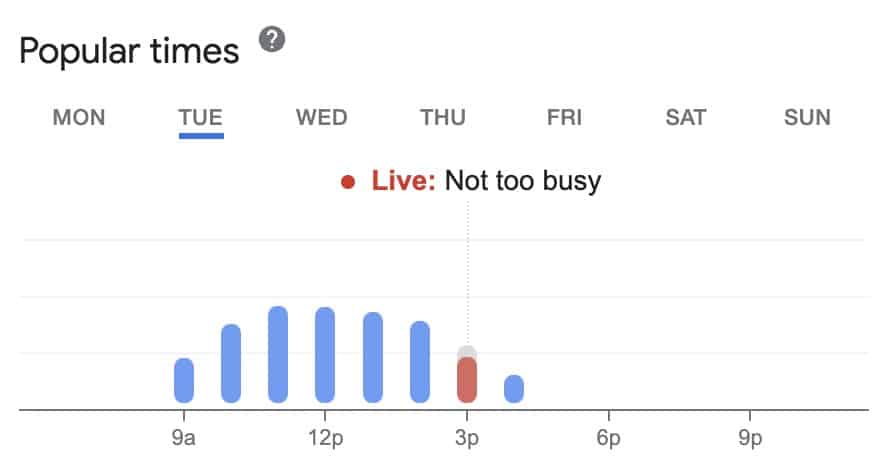
Of course, a greater sample of attractions would be ideal, but Tuesday seems to be the best time to visit Nikko. I’ve also noticed that several other attractions and areas around Japan are least busy on a Tuesday so plan accordingly.
Top Tip: A lot of restaurants are also closed on Tuesday in Japan. I’m not sure why, but don’t trust google!
Spring
Visit if: You’re looking to see the cherry blossom and watch the flora burst into life.

Like most of Japan, Spring is an incredibly enchanting time to visit Nikko, as the ancient town bursts into vibrant colors and new life after the cold winter months. From late March to May, Nikko is filled with cherry blossom.
There are many popular areas to view cherry blossoms in Nikko, but the most famous spot is perhaps Sakuranamiki Street. It’s a street over 300 meters long with hundreds of trees on either side of the road. Visit in mid-April if you’re keen on seeing them in full bloom! It’s definitely worth it to see the cherry blossoms!
Aside from cherry blossoms, spring also brings a refreshing atmosphere and pleasant temperatures to Nikko. It’s an ideal season for outdoor activities, such as hiking and exploring the numerous nature trails that dot the region.
Summer
Visit if: You’re looking to get away from the humidity and heat of the city.

Summer in Nikko offers a delightful escape from the heat and bustling city life, with its cooler temperatures and lush greenery. Take it from me, someone living in Tokyo, you’re going to want to find some rest from this ridiculous heat…
From June to August, Nikko’s forests and mountains come alive, providing a tranquil oasis for nature enthusiasts and outdoor adventurers while giving them a break from the scorching humidity of Japan’s bigger cities.
Whether you’re a seasoned hiker or a casual nature lover, there are trails suited for all levels of experience. The Kirifuri Falls and the Senjogahara Marshland are particularly popular destinations, offering incredibly scenic walks for avid ramblers.
While the dense forests provide shade from the sun, the crisp mountain air completely rejuvenates the senses. That’s a very good thing if you don’t want to feel like you’re in a sauna the entire day…
Just make sure you stock up on Pocari sweat, suncream, a hat, sunglasses, and cover-up from the sun. It’s deceivingly hot even with the wind!
Autumn
Visit if: You’re looking for one of the best places to see Koyo (紅葉), the changing of the leaves.

Autumn in Nikko paints the landscape with a breathtaking palette of rich and vibrant colors. From September to November, the region’s mountains and forests transform into a kaleidoscope of reds, oranges, and yellows, making it a must-see event if you’re in the area.
I’ve been to Nikko in the autumn, and you can see the tree leaves changing colors higher in the mountains and working their way down the valley. I think I was about 1-2 weeks too early for the peak, but it was still 100% worth it.
Just be prepared, autumn is probably the second busiest time to be traveling in Japan after Spring. We took the car in and were stuck in traffic for quite a few hours before we got moving again. If you’re considering driving over getting the train, don’t.
One of the most popular spots to admire the autumn foliage is Lake Chuzenji. Surrounded by majestic mountains, the lake offers a serene setting to witness this seasonal transformation. Whether you choose to stroll along its shores or take a boat ride, the panoramic views of the vivid autumn colors reflecting on the water are genuinely incredible.
Additionally, the nearby Senjogahara Marshland showcases a unique contrast of golden grasses and fiery leaves, creating a picturesque landscape that’s perfect for photography enthusiasts. I’ve also always wanted to visit here, so I’ll be super jealous of you!
Winter
Visit if: You’re looking for ‘winter wonderland’ type scenes
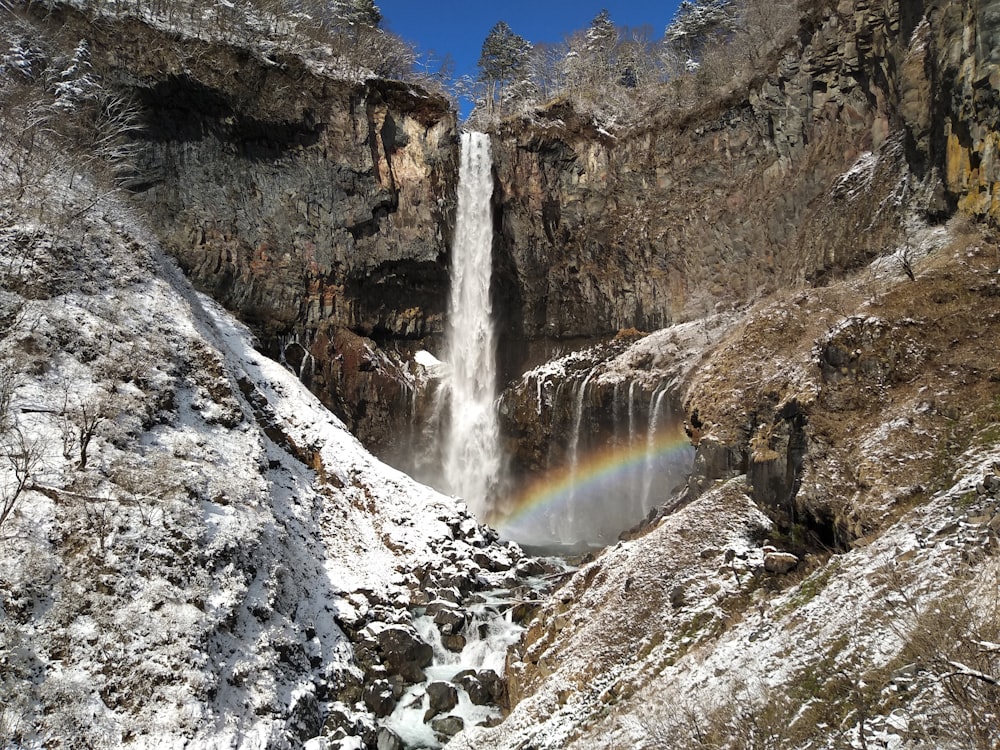
From December to February, Nikko may well be covered in a blanket of white snow. Needless to say, this makes the whole area look like a flipping fairytale, love it!
Winter in Nikko offers a unique opportunity to relax and rejuvenate in the region’s hot springs, known as onsen. Nestled amidst snowy landscapes, the hot springs provide a perfect retreat to warm up and unwind. The Yumoto Onsen, Kinugawa Onsen, and Yunishigawa Onsen are popular choices, offering a range of traditional Japanese inns and bathing facilities to choose from.
Another highlight of winter in Nikko is the opportunity to witness the iconic Toshogu Shrine draped in snow. The snow-covered roofs, the intricately carved details, and the peaceful ambiance combine to create a truly magical sight.
I’ve already spoken about how walking through Toshogu shrine during a slightly overcast/foggy day is quite the experience, and the same holds true for practically all weather conditions, especially snow. Walking through the shrine’s grounds, with snowflakes gently falling around you, evokes a sense of tranquility that you’ll struggle to find anywhere else.
When it all comes down to it, I think Nikko is well worth visiting for a day or two. The season in which you visit, and the accommodation you chose will depend on what sort of things interest you most about the area, but you can’t go wrong with most of the onsen hotels at any time of year, to be honest.
Also, try their cheese eggs. I keep seeing them advertised all over the place but have yet to get my hands on one, and they sound delicious!
Still looking for tranquility but can’t make it out to Nikko? Here is a list of some of the most relaxing places in Tokyo.



